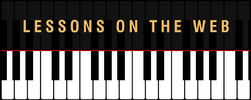|
These are Five Things You Need to Look For When Reading a Piece of Music 1. Time Signature – The time signature tells you how the beats are organized in a song. The top number tells you how many beats are in a measure and the bottom number tells you which note gets one beat. Think of the bottom number as a fraction. If the bottom number is a 4, you can assume that means 1/4 (one quarter). So, the quarter note gets one beat. If the bottom number is an 8, you can assume that means 1/8 (one eighth) and results in the eighth note getting one beat. 2. Key Signature – The key signature tells the musician what notes are sharped or flat throughout in a piece of music. If you want to figure out which notes are sharped or flat, look at the line or space that goes through the center of the sharp or flat. In the example included, the note F is sharped throughout the song since the sharp is in the middle of the top line in the treble clef and the next to top line with the bass clef. The sharps or flats in a key signature apply to ALL of the instances of that particular note. Using the key signature included in the example again; all of the F’s, no matter where they appear on the staff are sharped. So the first space of the treble clef will also be sharped even though the sharp appears on the top line. 3. Dynamics - These tell you how loud or soft to play. The following dynamics are listed from loudest to softest. ff (fortissimo) is very loud, f (forte) is loud, mf (mezzo forte) is medium loud, mp (mezzo piano) is medium soft, p (piano) is soft, and pp (pianissimo) is very soft. There are also crescendos which tell you to gradually get louder and decrescendos (aka diminuendos) which indicate to gradually get softer. 4. Finger Numbers - These are used to indicate what finger you should be using on a certain note. These are actually designed to make your life easier and your music sound better. By using correct fingering, you will be able to play up and down the keyboard much more effectively. It will also help you with phrasing and articulation. 5. Articulations - This is an umbrella term which tells the piano player how to play each note. Some examples of articulations include staccatos (short), legatos or slurs (connected notes), and accents (hit the note with more force). These give the music sound better by giving it more character and helps create musical ideas rather than just playing notes. That concludes the list of basic components that you should be aware of and become familiar with. There is of course a lot more to playing music than this, but I will save those for some future lists! Leave a Reply. |
AuthorMost blogs written by Archives
June 2020
Categories
All
|

 RSS Feed
RSS Feed